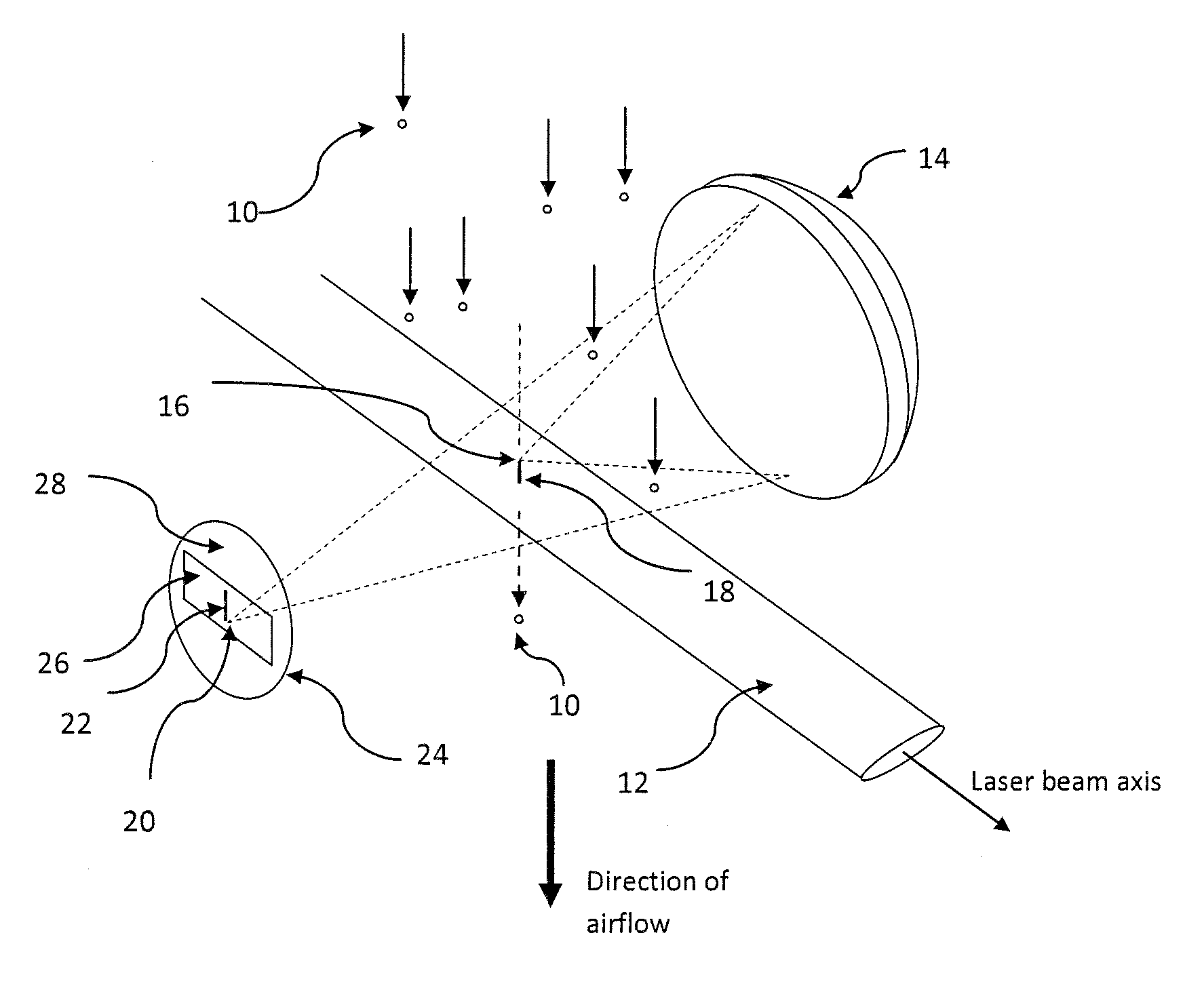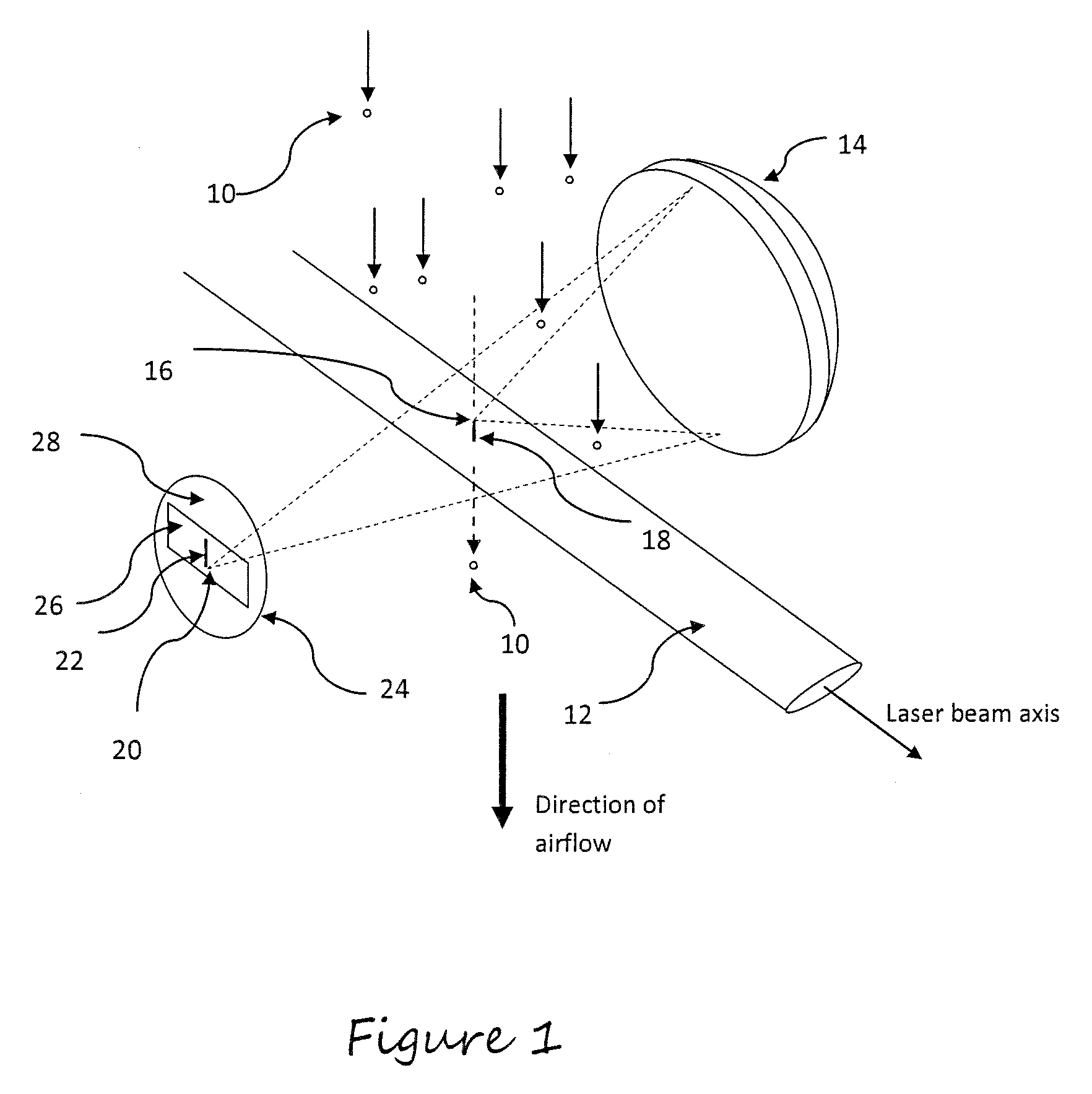Second generation low-cost particle counter
a particle counter and low-cost technology, applied in the direction of material analysis, withdrawing sample devices, instruments, etc., can solve the problems of affecting the final unit cost, and requiring a large amount of equipment, etc., to achieve the effect of low cost, low weight and low power consumption
- Summary
- Abstract
- Description
- Claims
- Application Information
AI Technical Summary
Benefits of technology
Problems solved by technology
Method used
Image
Examples
Embodiment Construction
[0075]The preferred embodiment requires a flow of particles 10 carried in a moving airstream to pass through a laser beam 12, where the axis of the laser beam is orthogonal to the direction of the airflow, as in FIG. 1. The particles 10 are not constrained and may pass anywhere through the laser beam 12. It is well known that the size of a particle may be determined by measuring at some angle the intensity of light scattered by the particle as it passes through the beam. However, the non-uniform intensity profile of the beam (typically Gaussian) means that a particle passing through the edge of the beam will be illuminated with a lower intensity of light than an identically-sized particle passing through the centre of the beam. It will thus scatter less light and will be measured as smaller than the particle passing through the centre of the beam.
[0076]Because of this potential source of particles sizing error, it is necessary to optically define a small sensing zone within the cent...
PUM
| Property | Measurement | Unit |
|---|---|---|
| diameter | aaaaa | aaaaa |
| angle | aaaaa | aaaaa |
| diameter | aaaaa | aaaaa |
Abstract
Description
Claims
Application Information
 Login to View More
Login to View More - R&D
- Intellectual Property
- Life Sciences
- Materials
- Tech Scout
- Unparalleled Data Quality
- Higher Quality Content
- 60% Fewer Hallucinations
Browse by: Latest US Patents, China's latest patents, Technical Efficacy Thesaurus, Application Domain, Technology Topic, Popular Technical Reports.
© 2025 PatSnap. All rights reserved.Legal|Privacy policy|Modern Slavery Act Transparency Statement|Sitemap|About US| Contact US: help@patsnap.com



